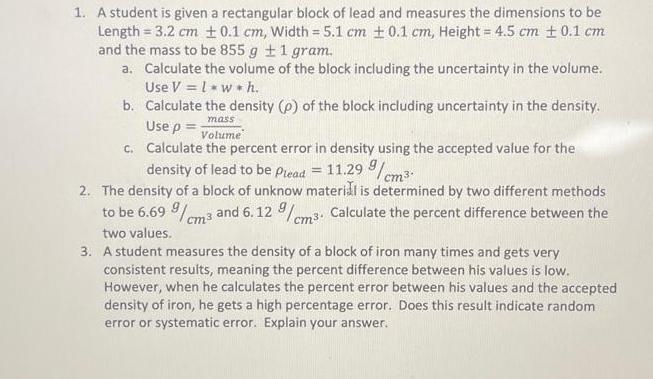Answered step by step
Verified Expert Solution
Question
1 Approved Answer
1. A student is given a rectangular block of lead and measures the dimensions to be Length = 3.2 cm 0.1 cm, Width =

1. A student is given a rectangular block of lead and measures the dimensions to be Length = 3.2 cm 0.1 cm, Width = 5.1 cm 0.1 cm, Height = 4.5 cm 0.1 cm and the mass to be 855 g 1 gram. a. Calculate the volume of the block including the uncertainty in the volume. Use V = 1 * w * h. b. Calculate the density (p) of the block including uncertainty in the density. mass Use p = Volume Calculate the percent error in density using the accepted value for the c. density of lead to be plead = 11.29 g/cm. 2. The density of a block of unknow material is determined by two different methods and 6.12 9/cm. Calculate the percent difference between the to be 6.69 9/ cm3 two values. 3. A student measures the density of a block of iron many times and gets very consistent results, meaning the percent difference between his values is low. However, when he calculates the percent error between his values and the accepted density of iron, he gets a high percentage error. Does this result indicate random error or systematic error. Explain your answer.
Step by Step Solution
There are 3 Steps involved in it
Step: 1

Get Instant Access to Expert-Tailored Solutions
See step-by-step solutions with expert insights and AI powered tools for academic success
Step: 2

Step: 3

Ace Your Homework with AI
Get the answers you need in no time with our AI-driven, step-by-step assistance
Get Started


